Kingston SSDNow V300 120GB SSD Review
New Test Platform – Intel Z77 Express
We felt it was time to upgrade to the Intel Z77 platform for our storage test bench, so we turned to our good friends at ASUS who have been kind enough to supply us with some hardware for our test benches over the years. We decided that for the time being, the Sandy Bridge Core i5 2500k processor will remain at the heart of this test bench since storage testing really does little to stress the CPU and it doesn’t play into the overall test results. In other words, the old idiom applies – if it ain’t broke, don’t fix it.
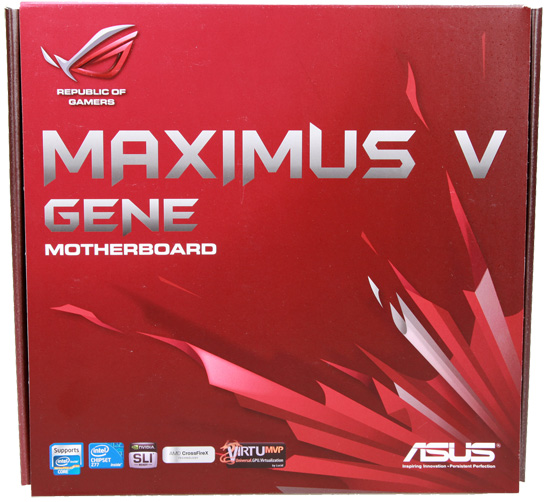
They came through in fine fashion again by shipping over a very nicely appointed Maximus V GENE LGA1155 motherboard with the Intel Z77 express chipset. This board carries the well-known Republic Of Gamers (ROG) brand that signifies high performance and designed with the gamer in mind.
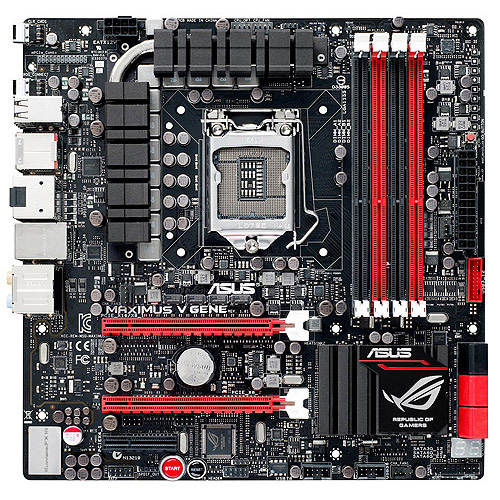
Though a bit diminutive since it’s designed in the uATX form factor, it’s still large on features. For our storage bench we needed a board that offered a variety of storage configuration options to give us the flexibility we need for future considerations and this fits the bill nicely. Up front we are ahead of the pack since this board has the latest CAP UEFI format optimized for Windows 8 which positively impacts SSD performance and post times. The UEFI is super simple to navigate to tweak as needed. ASUS also relayed to us that they do extensive OROM validation for all ROG boards, giving them greater flexibility with enthusiast class storage devices (i.e. RAID controlled and PCI-E based drives).
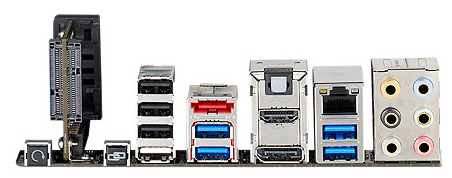
The most obvious place to look first is the rear panel. First, we’ll point out the integrated graphics outputs of both HDMI and DisplayPort so we can run the display directly from the board and not an external card which would add extra drivers and impact boot times. Same goes with the audio, having the SupremeFX III built in. Next, we have a variety of USB options, four each of USB 2.0 and 3.0. For USB 3.0 for systems running Windows 7 and 8, there’s enhanced functionality with USB Attached SCSI Protocol (UASP) or turbo support for greater throughputs. Also available is an eSATA port which is losing its luster a bit with consumers since Thunderbolt adoption is rapdily growing but it still has its place with a large number of external devices still configured to leverage it.

Speaking of Thunderbolt, ASUS also sent us over a sweet ThunderboltEX PCI-E card that goes right into the PCI-E x4 slot. We’re looking forward to giving it a try.
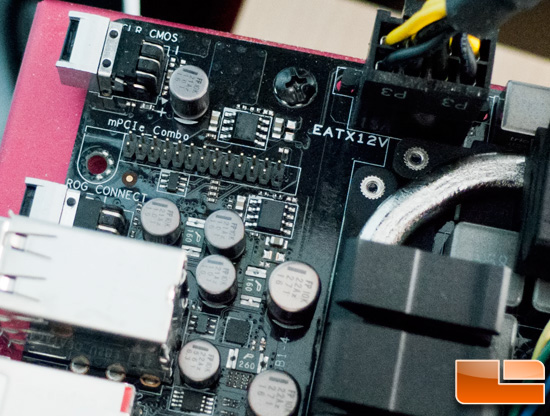
For mSATA needs, the board has a built in PCI-E combo header (PCH) which you can see pins for in the image above.
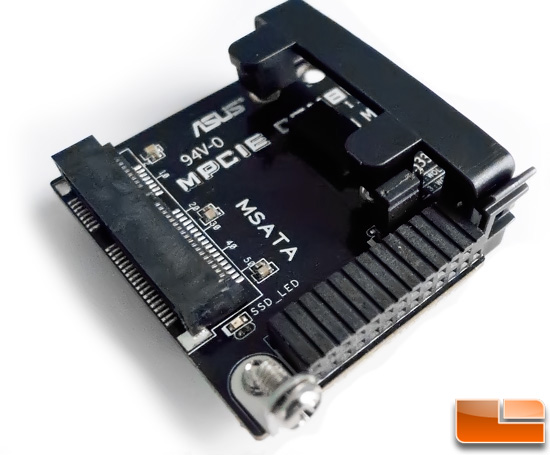
The provided mSATA adapter card accepts mSATA drives and then plugs right into the motherboard. Simple.
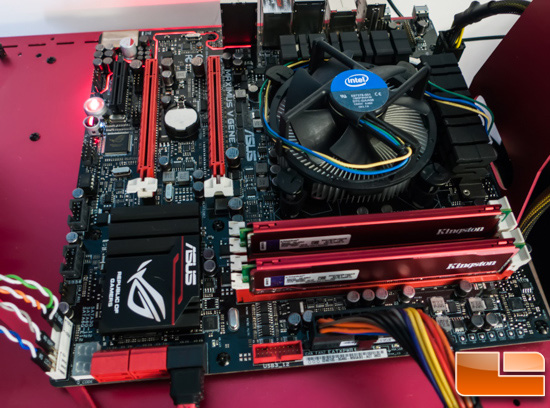
Then we have the SATA ports which will carry the bulk of the testing workload. The vertically stacked connectors on the left are 6Gbps capable running off of the ASMedia controller. In the middle are the Intel controlled 6Gbps SATA ports. The black ports on the right are 3Gbps Marvell controlled.
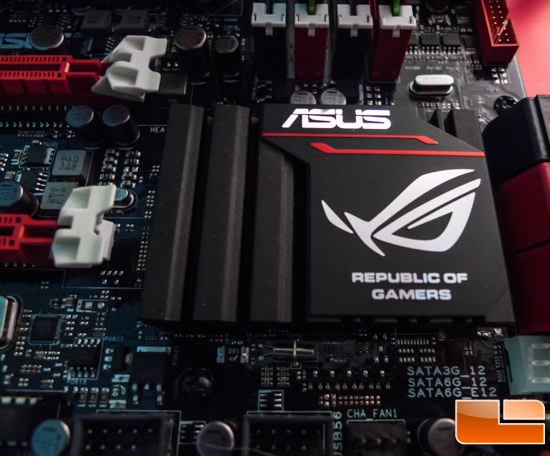
The Z77 express chipset is hidden behind this ROG logo adorned passive heatsink
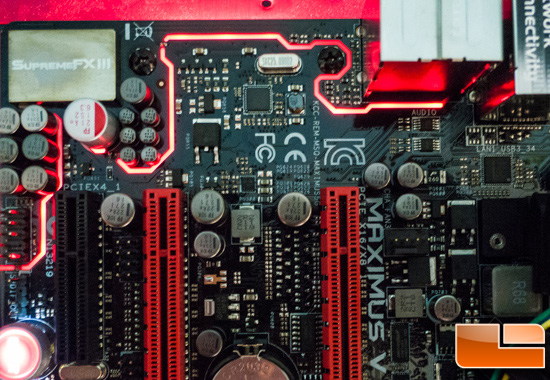
Finally, while it plays zero role in performance for what we are using the board for, we love the red glowing stripe that runs circuitously around the back corner of the board. On an open test bench, it looks awesome and if using a windowed case, it will bling nicely. Technically, it exists to delineate the audio portion of the PCB from the rest of the board. This segregation is important to mitigate noise interference making audiophiles rejoice. For testing, we have the HD audio disabled since it is not used. With that, let’s run through the rest of the test bench components.

Comments are closed.